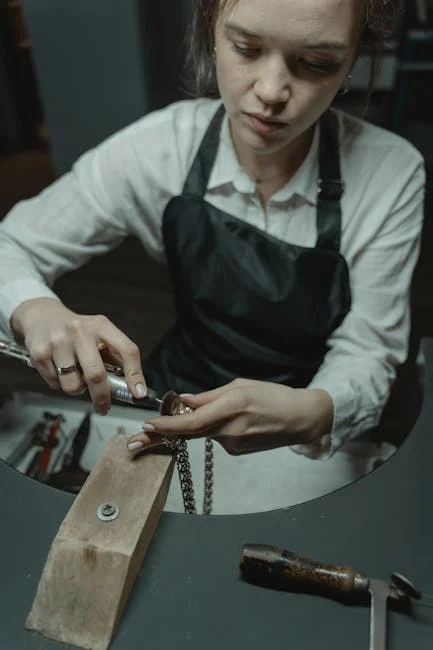How to Create a Focal Point in Each Room Using Clever Indoor Decoration Techniques
Introduction
Every room in your home has the potential to be a captivating space, a haven that reflects your personality and style. The key to unlocking this potential lies in creating a focal point – a visual anchor that draws the eye and sets the tone for the entire room. A well-chosen focal point not only adds visual interest but also helps to create a sense of balance and harmony.
But how do you choose and create this crucial element? This article explores clever indoor decoration techniques to establish effective focal points in every room, enhancing your home’s aesthetic appeal and creating spaces that feel both inviting and intentional.
Creating Focal Points: Room by Room
Living Room: The Heart of Your Home
The living room is often the largest and most social space in the house. Therefore, its focal point needs to be impactful.
- The Fireplace: A classic and natural focal point. Enhance it with a stunning mantelpiece, decorative objects, or a bold piece of artwork above.
- A Statement Wall: Paint one wall in a contrasting color, use textured wallpaper, or create a gallery wall featuring your favorite prints and photographs. This instantly draws the eye.
- Large Furniture Piece: A striking sofa, a grand piano, or even a large bookshelf can serve as a focal point. Arrange the rest of the furniture around it to create a cohesive and inviting space.
Bedroom: Your Personal Sanctuary
In the bedroom, the focal point should contribute to a sense of calm and relaxation.
- The Bed: Position the bed as the central element. A beautiful headboard, luxurious bedding, or a canopy can elevate its presence.
- Window with a View: If your bedroom boasts a stunning view, make it the star. Keep window treatments simple to maximize the natural light and the visual connection to the outdoors.
- Artwork or Mirror: Hang a large piece of artwork above the bed or place a decorative mirror on the opposite wall to create a point of interest.
Dining Room: Setting the Scene for Meals
The dining room’s focal point should complement the act of dining and entertaining.
- Statement Lighting: A chandelier or pendant light fixture above the dining table is a surefire way to create a focal point. Choose a design that complements the style of your dining set and the overall décor.
- Dining Table Centerpiece: An elaborate floral arrangement, a collection of candles, or a sculptural object placed in the center of the table can serve as a temporary but impactful focal point.
- Artwork or a Mirror: Similar to the bedroom, a strategically placed artwork or mirror can add depth and visual interest to the dining room.
Kitchen: The Hub of Activity
The kitchen can be a challenging space to create a focal point, but it’s definitely possible.
- Kitchen Island: If you have a kitchen island, make it a focal point by choosing a contrasting color or material for the cabinetry. Adding pendant lights above the island can further enhance its presence.
- Backsplash: A bold and eye-catching backsplash can instantly transform the look of your kitchen. Choose a material with interesting texture, color, or pattern.
- Range Hood: A stylish range hood can be both functional and aesthetically pleasing, serving as a focal point above the cooktop.
Bathroom: Spa-Like Serenity
Even bathrooms can benefit from a defined focal point, enhancing the feeling of relaxation and luxury.
- Vanity: A beautifully designed vanity with unique hardware or a striking countertop can be a major focal point.
- Statement Mirror: An oversized or uniquely shaped mirror above the vanity can add visual interest and make the space feel larger.
- Freestanding Bathtub: A luxurious freestanding bathtub is a statement piece that instantly elevates the bathroom’s aesthetic.
General Tips for Creating Effective Focal Points
- Consider the Room’s Function: The focal point should complement the room’s purpose.
- Balance and Proportion: Ensure the focal point is appropriately sized for the room and doesn’t overwhelm the space.
- Color and Contrast: Use color and contrast to draw attention to the focal point.
- Lighting: Proper lighting can enhance the impact of your focal point.
- Simplicity is Key: Don’t overcomplicate things. Sometimes, a single, well-chosen element is all you need.
Conclusion
Creating a focal point in each room is a powerful way to elevate your home’s design and create spaces that feel both beautiful and functional. By considering the room’s purpose, incorporating visual interest, and using clever decoration techniques, you can transform your home into a reflection of your personal style and create an environment you truly love. Experiment with different ideas, play with color and texture, and don’t be afraid to step outside your comfort zone. With a little creativity and effort, you can unlock the full potential of your home and create spaces that are both visually stunning and deeply inviting.














Post Comment